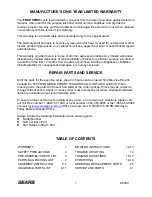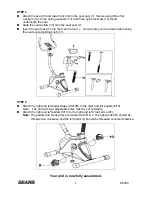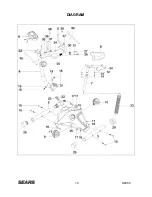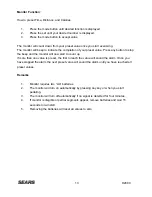
15 ©2009
TRAINING GUIDELINES
Exercise
Exercise is one of the most important factors in the overall health of an individual. Listed among
its benefits are:
x
Increased capacity for physical work (strength endurance)
x
Increased cardiovascular (heart and arteries/veins) and respiratory efficiency
x
Decreased risk of coronary heart disease
x
Changes in body metabolism, e.g. losing weight
x
Delaying the physiological effects of age
x
Physiological effects, e.g. reduction in stress, increase in self-confidence, etc.
Basic Components of Physical Fitness
There are four all encompassing components of physical fitness and we need to briefly define
each and clarify its role.
Strength is the capacity of a muscle to exert a force against resistance. Strength
contributes to power and speed and is of great importance to a majority of sports people.
Muscular Endurance is the capacity to exert a force repeatedly over a period of time, e.g. it
is the capacity of your legs to carry you 10 Km without stopping.
Flexibility is the range of motion about a joint. Improving flexibility involves the stretching of
muscles and tendons to maintain or increase suppleness, and provides increased
resistance to muscle injury or soreness.
Cardio-Respiratory Endurance is the most essential component of physical fitness. It is the
efficient functioning of the heart and lungs
Aerobic Fitness
The largest amount of oxygen that you can use per minute during exercise is called your
maximum oxygen uptake (MVo2). This is often referred to as your aerobic capacity.
The effort that you can exert over a prolonged period of time is limited by your ability to deliver
oxygen to the working muscles. Regular vigorous exercise produces a training effect that can
increase your aerobic capacity by as much as 20 to 30%. An increased MVO2 indicates an
increased ability of the heart to pump blood, of the lungs to ventilate oxygen and of the muscles
to take up oxygen.
Anaerobic Training
This means “without oxygen” and is the output of energy when the oxygen supply is insufficient
to meet the body’s long term energy demands. (For example, 100 meter sprint).
The Training Threshold
This is the minimum level of exercise which is required to produce significant improvements in
any physical fitness parameter.
Progression
As your become fitter, a higher intensity of exercise is required to create an overload and
therefore provide continued improvement
Overload
This is where you exercise at a level above that which can be carried out comfortably. The
intensity, duration and frequency of exercise should be above the training threshold and should
be gradually increased as the body adapts to the increasing demands. As your fitness level
improves, so the training threshold should be raised.
Working through your program and gradually increasing the overload factor is important.
Содержание 16216593
Страница 11: ...10 2009 DIAGRAM...
Страница 12: ...11 2009...







































